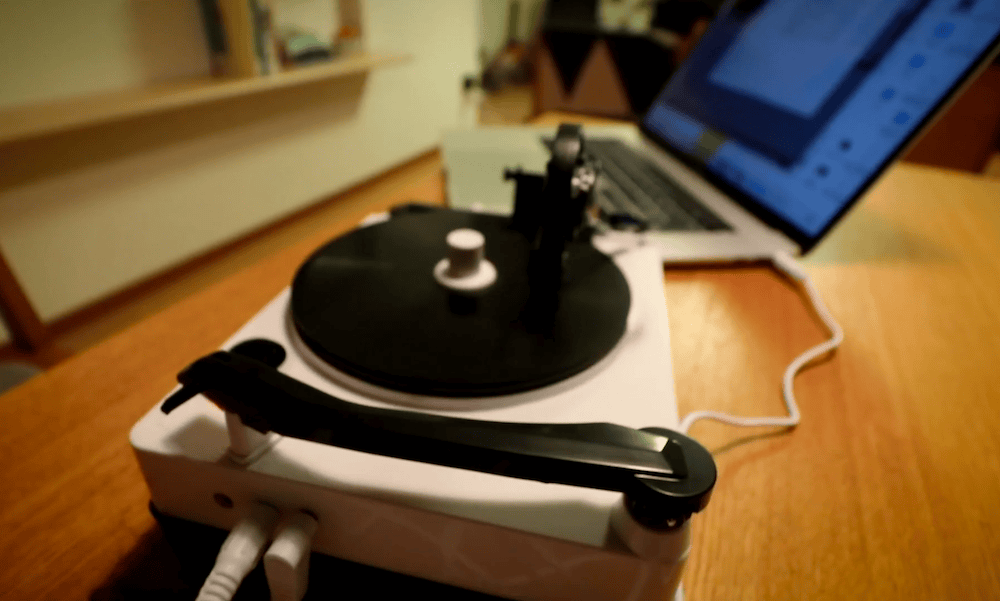
[Image above] Traditional production of vinyl records is a complicated and expensive process—a new Japanese machine could change that. Credit: Lullatone, YouTube
When I purchased my current car, it had been over seven years since I got my last one. And so it never occurred to me that asking for a CD player would be unusual—until the salesperson looked at me like I had two heads.
Today, people who rely on CDs are Luddites of the music world. Streaming instead dominates music consumption, making up about 80% of the music industry’s revenue. Yet for all the ridicule CDs get as an “old” technology, there is an even older technology that people continue to praise and, in recent years, has seen a surge in sales—vinyl records.
Vinyl records were first introduced in the 1930s as a more durable option to brittle, scratchy shellac records. Vinyl remained the dominant format for physical recordings until the late 1970s, “when the sound quality of cassette tapes had improved sufficiently to allow them to rival records,” an MN2S article explains.
When CDs hit the scene in the 1980s, people started labeling vinyl as obsolete. But since 2007, the Western world has seen a Vinyl Revival, with sales of vinyl records growing enormously—in fact, last year vinyl record sales surpassed CDs for the first time in decades (revenue-wise, not unit-wise).
Why is vinyl so popular? There are a number of reasons people give for loving the format, from the fact that it offers a more “warm,” authentic sound to the tangible listening experience (e.g., moving the needle, flipping the record).
However, there is one big disadvantage to vinyl—unlike tapes and CDs, you cannot easily create your own record … or can you?
Easy Record Maker—cut vinyls at home
Since he was a teenager, Japanese designer and sound artist Yuri Suzuki has dreamt of creating a machine that allows easy record production at home.
“With most of the existing media—CD, tape, and mp3—it is relatively easy to make a copy or create your own original,” he says in a Dezeen article. “However, as it’s a complicated process with records, there is no [affordable] way to create them at home.”
About five years ago, Suzuki partnered with Japanese publishing and toy company Gakken after initial discussions about creating accessible DIY instruments. They’ve now premiered the first record cutting machine readily available to purchase at a consumer level.
The Easy Record Maker takes about an hour to assemble. Once it is built, users simply play audio through the provided auxiliary cable or USB and then put the cutting arm onto a blank five-inch disc, select 33 rpm or 45 rpm, and start making the record.
“The cutting arm … is precise enough to lay down three or four grooves in the space of just a single millimeter,” a Gizmodo article explains. “That means approximately four minutes of audio can be captured in the device’s 33 RPM mode, or closer to three minutes in 45 RPM mode, with slightly improved sound quality. The blanks are also two-sided, which essentially doubles their capacity.”
The Easy Record Maker is currently available in Japan and will be available in the United Kingdom and United States later this year.
Want to see the Easy Record Maker in action? Lullatone, a Japanese musical duo based in Nagoya, released a video of them experimenting with the machine, including recording a song from their computer to vinyl, recording an instrument live to vinyl, and also cutting on a blank DVD instead of one of the discs.
Credit: Lullatone, YouTube
After watching the above video, you may wonder how commercial vinyl records are made. A video by CNET summarizes the steps, including creation of the master lacquer.
Credit: CNET, YouTube
Author
Lisa McDonald
CTT Categories
- Education
Spotlight Categories
- Member Highlights


